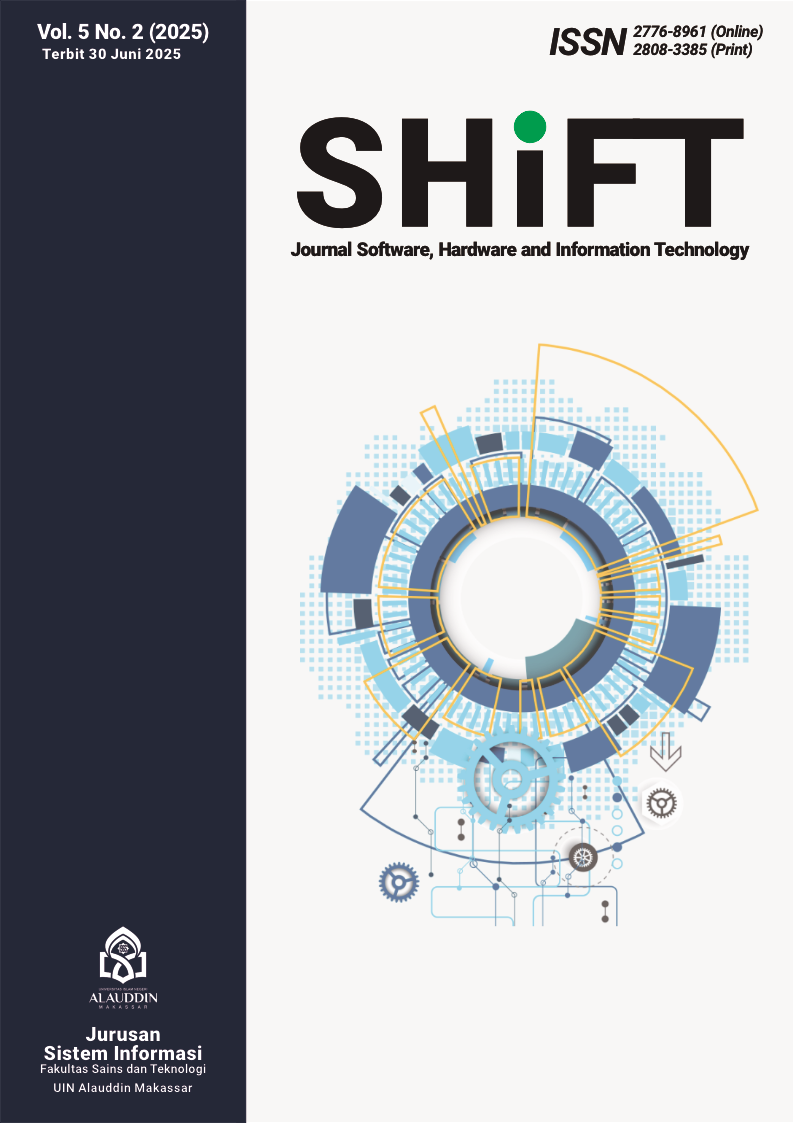Pengembangan Landing Page untuk Mendukung Digitalisasi PT Kosa Group Indonesia Menggunakan Platform Low-Code
Main Article Content
Abstract
This study aims to develop a landing page as part of the digitalization strategy of PT Kosa Group Indonesia, a culinary company consisting of three main divisions: Kosarasa, Kosa Team, and Risafood. The development followed the waterfall method through observation, literature review, system design, implementation, and testing. The Framer platform was selected as a low-code solution due to its efficiency in building responsive, maintainable interfaces without the need for complex programming. This initiative was driven by the limitations of previously used platforms such as LinkTree, which lacked the capability for visual customization and did not effectively unify multi-division information. Performance testing using Google PageSpeed Insights showed an increase from 44 to 54 on mobile and from 44 to 55 on desktop after visual and structural optimizations. Usability testing using the System Usability Scale (SUS) yielded an average score of 87.25, which is categorized as excellent. The results indicate that low-code-based landing page development offers an effective solution to support business digitalization in the culinary sector, while maintaining development efficiency, strong visual identity, and user-friendly experience.
Downloads
Article Details

This work is licensed under a Creative Commons Attribution-NonCommercial-ShareAlike 4.0 International License.
References
N. Sasvito, “Pengaruh Persepsi Kemudahan dan Persepsi Manfaat terhadap Minat Pelaku Bisnis Digital Membuat Landing Page Menggunakan Content Management System,” Multidiscience, vol. 1, no. 2, pp. 135–142, Aug. 2024, doi: 10.59631/multidiscience.v1i2.252.
S. Meesala, “The Role of a Landing Page in Digital Marketing,” vol. 9, no. 4, Apr. 2022.
L. Fabisiak and B. Jagielska, “Designing ‘Landing Page’ for Websites Based on the User Experience: Review, Analysis, and Interpretation,” in Updates on Software Usability, L. M. Castro, Ed., IntechOpen, 2023. doi: 10.5772/intechopen.109240.
A. Yahya, Nuryakin, and S. D. Handayani, “Brand Image: Theoretical Development and Practical Applications,” AJMA, vol. 3, no. 2, pp. 271–282, Apr. 2024, doi: 10.55927/ajma.v3i2.8504.
T. Gada, “The Role of User Experience in Effective Product Design Exercises: Strategies for Incorporating User-Centric Approaches and Data Analysis with Business Intelligence,” IRJMETS, vol. 06, no. 05, May 2024, doi: 10.56726/IRJMETS56245.
T. Suryani, A. A. Fauzi, and M. Nurhadi, “Enhancing Brand Image in the Digital Era: Evidence from Small and Medium-sized Enterprises (SMEs) in Indonesia,” GADJAH MADA INT. J. BUS., vol. 23, no. 3, p. 314, Aug. 2021, doi: 10.22146/gamaijb.51886.
A. A. Wahid, “Analisis Metode Waterfall Untuk Pengembangan Sistem Informasi,” Jurnal Ilmu-ilmu Informatika dan Manajemen STMIK, vol. 1, no. 1, pp. 1–5, Nov. 2020.
I. A. Hastantri and B. Suranto, “Eksplorasi Alat UI/UX Berbasis Web Minim Pengkodean dengan Teknologi Kecerdasan Buatan Framer.com,” vol. 12, no. 1, pp. 18–46, Nov. 2024, doi: https://doi.org/10.47668/edusaintek.v12i1.1391.
Y. Liu, M. Lee, B. Yang, and J.-B. Martens, “Low Code Conversation-based Hybrid UI Design Case Study and Reflection,” in Proceedings of the Eleventh International Symposium of Chinese CHI, Denpasar, Bali Indonesia: ACM, Nov. 2023, pp. 139–145. doi: 10.1145/3629606.3629620.
N. Oktaviani and F. Fatmasari, “Measuring User Perspectives on Website Conference Using System Usability Scale,” journalisi, vol. 2, no. 2, pp. 279–290, Sep. 2020, doi: 10.33557/journalisi.v2i2.76.
R. S. Pressman and B. R. Maxim, Software engineering: a practitioner’s approach, Ninth edition. New York, NY: McGraw-Hill Education, 2020.
A. Saravanos and M. X. Curinga, “Simulating the Software Development Lifecycle: The Waterfall Model,” ASI, vol. 6, no. 6, p. 108, Nov. 2023, doi: 10.3390/asi6060108.
F. A. Esa, “Perancangan Antarmuka Pengguna (UI) dan Pengalaman Pengguna (UX) Menggunakan Metode User-Centered Design (UCD) pada Aplikasi Pengajuan Kaizen (Studi Kasus: PT Yamaha Indonesia),” Industrial Engineering [2569], Universitas Islam Indonesia, Kaliurang St No.Km. 14,5, Krawitan, Umbulmartani, Ngemplak, Sleman Regency, Special Region of Yogyakarta 55584, 2023. [Online]. Available: https://dspace.uii.ac.id/handle/123456789/46782
H. Cripps, U. Söderström, and O. Norberg, “Designing Call to Action: Users’ Perception of Different Characteristics,” in 34th Bled eConference Digital Support from Crisis to Progressive Change: Conference Proceedings, University of Maribor Press, Jan. 2021, pp. 405–416. doi: 10.18690/978-961-286-485-9.30.
D. Bansal, “How SEO Makes Website Loads Faster and Helps in User Engagement,” IJFMR, vol. 6, no. 2, p. 15291, Mar. 2024, doi: 10.36948/ijfmr.2024.v06i02.15291.
Veni Manik, C. Hetty Primasari, Yohanes Priadi Wibisono, and Aloysius Bagas Pradipta Irianto, “Evaluasi Usability pada Aplikasi Mobile ACC.ONE menggunakan System Usability Scale (SUS) dan Usability Testing,” 2021. Accessed: Jun. 15, 2025. [Online]. Available: https://13.76.143.202/index.php/JSI/article/view/286
Dongmei Gao and F. Fagerholm, “Measuring End-user Developers’ Episodic Experience of a Low-code Development Platform,” EISEJ, vol. 18, no. 1, p. 240105, 2024, doi: 10.37190/e-Inf240105.
